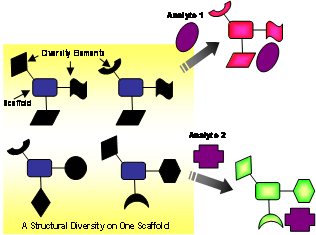










|
Title of Talk Molecular Imaging Probe Development by DOFLA
Abstract The conventional bioprobe design has been carried out by so-called hypothesis-driven approach. The basic assumption of hypothesis-driven approach is that the scientist “knows the target” in advance, and then design the recognition motif for it. An alternative approach is diversity-driven approach, in which a broad range of fluorescence molecules in a library format are constructed by combinatorial chemistry, as a tool box for unbiased screening. Among several diversity sources, “Diversity Oriented Fluorescence Library Approach (DOFLA)” using fluorophore core with diverse recognition motives around has been the most fruitful in novel bioprobe generations. Using DOFLA, various colorful bioimaing probes from stem cells to Neurons will be demonstrated.
References: 1. Vendrell, M.; Zhai, D.; Er, J. C. Chang, Y. T. Chem. Rev. 2012, 112, 4391-4420. 2. Yun, S. W.; Leong, C. K. M; Zhai, D.; Tan, Y. L.; Lim, L.; Bi, X.; Lee, J. J.; Kim, H.; Kang, N. Y.; Ng, S. H.; Stanton, L. W.; Chang, Y. T. Proc. Natl. Acad. Sci. USA 2012, 109, 10214-10217. |
|
Young-Tae Chang, Professor
Department of Chemistry, National University of Singapore, SINGAPORE e-mail: chmcyt@nus.edu.sg
Profile. Young-Tae Chang was born in Busan, Korea, in 1968. He studied chemistry in Pohang University of Science and Technology (POSTECH, Korea) and received his B.S. in 1991. After one and half years of army service in Korea, he started his graduate study at POSTECH and received a Ph.D. in 1997 under the supervision of Prof. Sung-Kee Chung, working on the divergent synthesis of all possible regioisomers of myo-inositol phosphates. He did his postdoctoral work with Prof. Peter Schultz at UC Berkeley and The Scripps Research Institute. In 2000, he was appointed assistant professor at New York University and promoted to associated professor in 2005. He received the NSF Career award in 2005 and his research interests have been chemical genetics, molecular evolution, and artificial tongues. In September, 2007, he moved to National University of Singapore and Singapore Bioimaging Consortium. He is a full professor of Chemistry and leader of Medicinal Chemistry Program of NUS, and Lab Head of Bioimaging Probe Development at SBIC, Biopolis. He published more than 200 scientific papers / 3 books and filed 40 patents so far.
|


